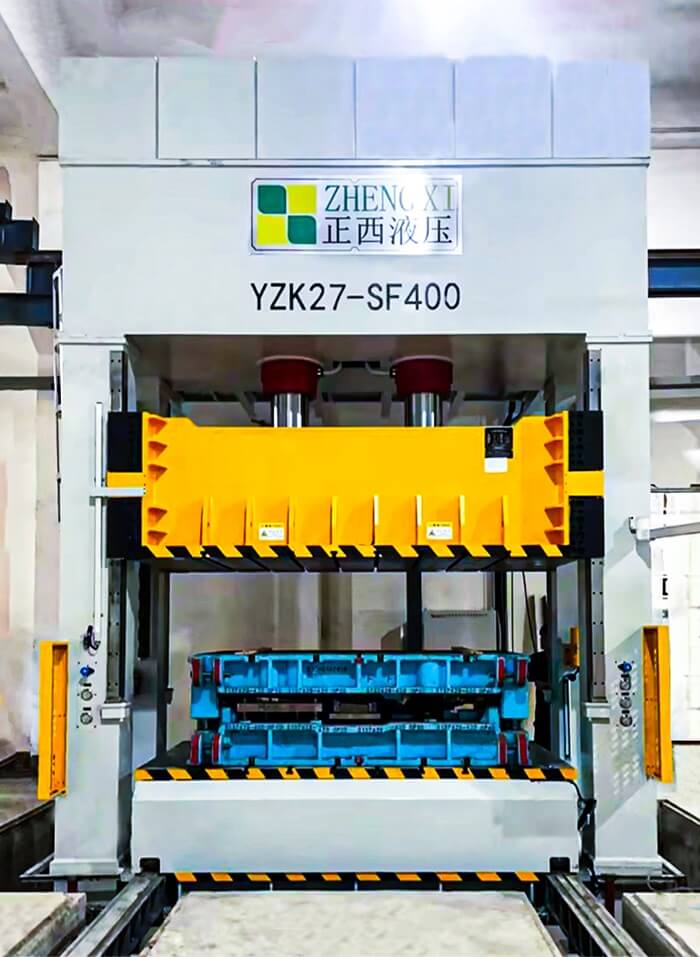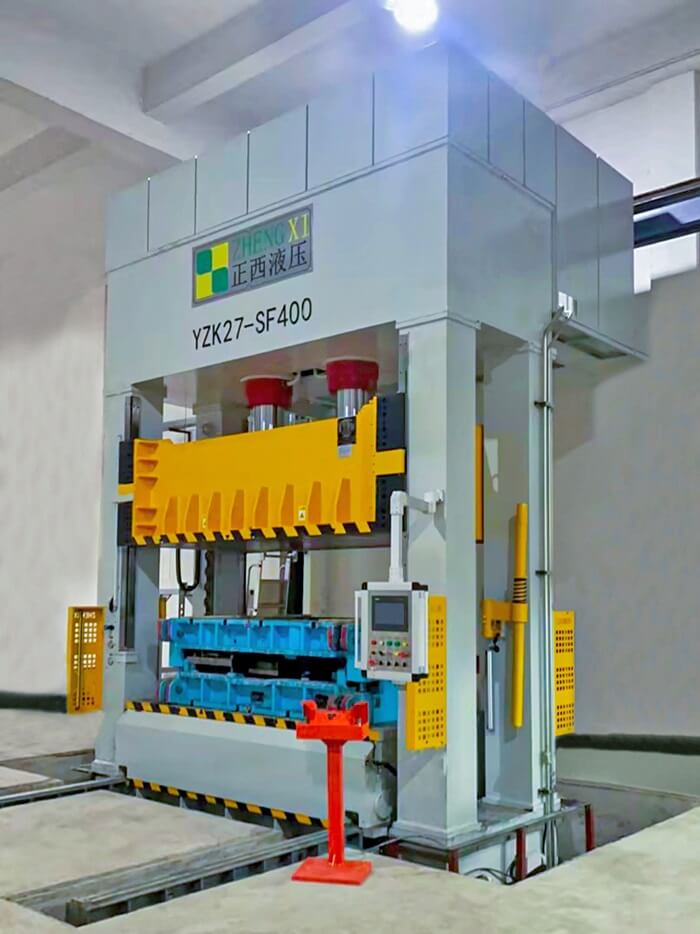In the field of hydraulic presses, double-action deep drawing hydraulic presses and single-action hydraulic presses are two common types. Although they are all hydraulic press machines, they have significant differences in working principles, performance characteristics, and application fields. Today, we will analyze the main differences between the two in detail.
1. Working cylinder
One of the main features of the double-action stretching hydraulic press is that it has two working cylinders. The outer cylinder is called the punch cylinder, which is used to provide tensile force to stretch the workpiece in the mold. The inner cylinder is called the die cylinder, which is used to provide support and ensure the stability of the workpiece during the stretching process. This unique structural design enables the double-action drawing hydraulic press to achieve high-precision and high-efficiency drawing processing and is especially suitable for workpieces that require complex drawing and forming, such as auto parts, metal containers, and electronic product casings.

In contrast, a single-acting hydraulic press has only one working cylinder. It realizes processing actions such as stamping and forming through the reciprocating motion of the cylinder. The single-action hydraulic press has a relatively simple structure and low cost. It is suitable for some simple stamping and forming processes, such as stamping of metal sheets and forming of plastic products.
2. Performance
In terms of performance, the double-acting hydraulic press has greater tensile force and stroke. Since the tensile force provided by the outer cylinder directly acts on the workpiece, it can achieve a greater tensile deformation, thereby meeting the production requirements of high-strength and high-precision tensile parts. The tensile force and stroke of the single-acting hydraulic press are relatively small.
In addition, the control system of the double-acting hydraulic press is more complex and precise. It needs to be able to accurately control the movement speed, pressure, and stroke of the two working cylinders to ensure the stability and consistency of the stretching process. The control system of the single-acting hydraulic press is relatively simple.
3. Application
In terms of application areas, the double-acting hydraulic press is widely used in automobile manufacturing, aerospace, electronic communications, home appliances, and other industries to produce various complex shapes of metal parts, such as automobile body covers, engine cylinders, mobile phone shells, etc.
Single-acting hydraulic presses are mainly used in some simple stamping processes, such as punching, blanking, bending, and other processes of metal sheets, as well as the molding of plastic products.

In short, there are obvious differences between double-acting and single-acting hydraulic presses in terms of working principles, performance characteristics, and application areas. Choosing the right type of hydraulic press requires comprehensive consideration of factors such as specific processing requirements, workpiece shape and size, production efficiency, and precision requirements.
Media Contact
Company Name: Chengdu Zhengxi Hydraulic Equipment Manufacturing Co., Ltd.
Email: Send Email
Country: China
Website: https://www.zx-hydraulic.com/














